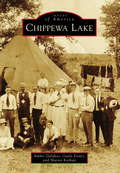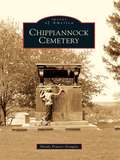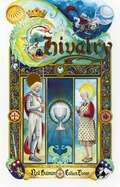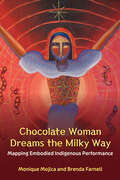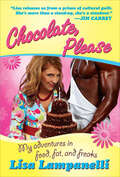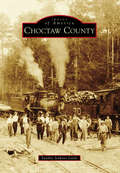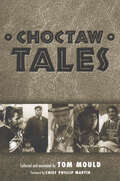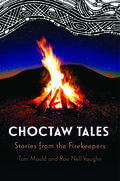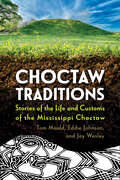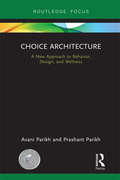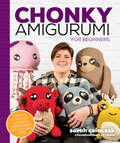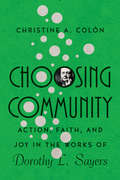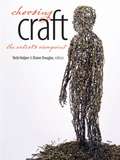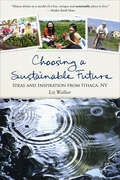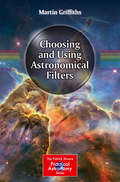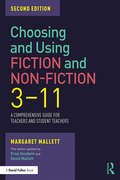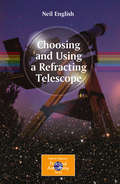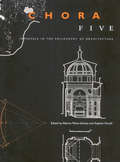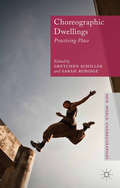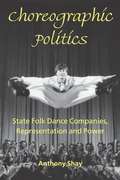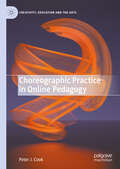- Table View
- List View
Chippewa Lake (Images of America)
by Amber Dalakas Gayle Foster Sharon KarhanFormed by glaciers, Chippewa Lake has been drawing visitors since early Indian tribes came to hunt and fish; settlers first laid down roots in the area during the War of 1812. Soon, visitors hoping to escape the heat of the city discovered the cooling waters of Chippewa. Eventually, a pleasure resort was developed, and the area expanded. Churches, a school, a brickyard, a grain elevator, general stores, a post office, and a meat market were established. Passenger trains delivered families laden with picnic baskets to Chippewa Lake Park, an amusement park that featured water activities, a carousel, a roller coaster, and a ballroom. Dignitaries, politicians, and entertainers frequented the park. A cottage community developed along the shoreline in neighborhoods like Gloria Glens, Briarwood Beach, and Chippewa-on-the-Lake. Before refrigeration, ice was harvested from the lake in the winter and shipped as far away as Philadelphia. After 100 years in operation, Chippewa Lake Park closed in 1978. The lake is currently owned by the Medina County Park District and still offers spectacular sunsets and public fishing and boating.
Chippiannock Cemetery
by Minda Powers-DouglasBuilt on a ridge named for the great Native American spirit Manitou, Chippiannock Cemetery has honored the dead of Rock Island County for over 150 years. Chippiannock, which means "village of the dead" in the Sauk and Fox languages, is truly a village. People from all walks of life are buried in the majestic rolling grounds. From railroad and lumber barons to blacksmiths and riverboat captains, here one will find the people who made this land along the Mississippi River thrive. Upon stepping through the gates of Chippiannock, one finds memorials to the dead, ranging from artistic and stately to simple or humble. Each stone tells a story-whether it is a cenotaph in honor of Civil War major general John Buford or the two Dimick children who passed away on the same day in 1878 of diphtheria. Today Chippiannock remains an active, "living" cemetery, beloved by locals and considered a jewel of the Quad Cities.
Chivalry
by Neil GaimanFrom the award-winning creators Neil Gaiman and Colleen Doran comes a stunning new graphic novel.An elderly widow buys what turns out to be the Holy Grail from a second-hand shop, setting her off on an epic adventure with a knight who brings her gifts of ancient relics in hope of winning the cup.From the Eisner and Bram Stoker-award winning team of Snow, Glass, Apples comes a delightfully humorous and charming new graphic novel adaptation.---'Like Ray Bradbury before him, [Neil Gaiman] writes lovely little horror stories, fairy tales and fantasies which are as familiar as they are fabulous, stories that are never quite what the reader expects...' A.V. CLUB'A combination of a superb script, with Gaiman at his evocative, inventive best, and masterful artwork from Doran' STARBURST on Snow, Glass, Apples
Chocolate Woman Dreams the Milky Way: Mapping Embodied Indigenous Performance (Theater: Theory/Text/Performance)
by Brenda Farnell Monique MojicaThis volume documents the creation of Chocolate Woman Dreams the Milky Way, a play written and performed by Monique Mojica with collaborators from diverse disciplines. Inspired by the pictographic writing and mola textiles of the Guna, an indigenous people of Panama and Colombia, the book explores Mojica’s unique approach to the performance process. Her method activates an Indigenous theatrical process that privileges the body in contrast to Western theater’s privileging of the written text, and rethinks the role of land, body, and movement, as well as dramatic story-structure and performance style. Co-authored with anthropologist Brenda Farnell, the book challenges the divide between artist and scholar, and addresses the many levels of cultural, disciplinary, and linguistic translations required to achieve this. Placing the complex intellect inherent to Indigenous Knowledges at its center, the book engages Indigenous performance theory, and concepts that link body, land, and story, such as terra nullius/corpus nullius, mapping, pattern literacy, land literacy, and movement literacy. Enhanced by contributions from other artists and scholars, the book challenges Eurocentric ideologies about what counts as “performance” and what is required from an “audience,” as well as long-standing body-mind dualisms.
Chocolate, Please: My Adventures in Food, Fat, and Freaks
by Lisa LampanelliAn inside look at the life of Comedy's Lovable Queen of Mean, Lisa Lampanelli, as she dishes on everything from relationships, food, and fat to why once you go black, you never go back In her jaw-droppingly hilarious and politically incorrect memoir, Lisa reveals all—including the dysfunctional childhood that made her the insult comic she is today, the subject for which she's best known (black men, black men, and more black men), and her hilarious struggles with her addiction to food and hot guys. By telling her story in her very real, very candid, very open way, Lisa shows her audience that it's okay to be yourself, even if it's just one rehab stint at a time. Lisa also takes readers behind the scenes at the roasts that have marked her comedy career and launched her into the comedy elite, and reveals the important "firsts" in her career, including her first time on her hero's program, The Howard Stern Show.Chocolate, Please is a side-splittingly funny portrait of the woman behind the award-winning insult comedy.
Choctaw County (Images of America)
by Sandra Jenkins LittleChoctaw County, one of Alabama�s largest counties by area at 909 square miles, is one of the smallest in population. It was established on December 29, 1847, by taking land from Sumter and Washington Counties. The county seat was named Butler after Col. Pierce Mason Butler, who had been killed several months earlier during the Battle of Churubusco. Today, Choctaw County is a recognized leader in the pulpwood industry and renowned for its hunting and fishing. Cattle farming and agriculture also play a large role in daily life and economics. Residents take pride in having the first producing oil well in the state of Alabama, the remains of the historic healing waters of the Bladon Springs Hotel, and even a connection with the basilosaurus cetoides, a prehistoric sea mammal found near Melvin, currently on display in the Smithsonian National Museum of Natural History.
Choctaw Tales
by Tom MouldIncluding stories from the 1700s to today, Choctaw Tales showcases the mythic, the legendary and supernatural, the prophecies and histories, the animal fables and jokes that make up the rich and lively Choctaw storytelling tradition. The stories display intelligence, artistry, and creativity as Choctaw narrators, past and present, express and struggle with beliefs, values, humor, and life experiences. Photographs of the storytellers complement the text. For sixteen tales, the Choctaw-language version appears in addition to the English translation. Many of these stories, passed down through generations, address the Choctaw sense of isolation and tension as storytellers confront eternal, historical, and personal questions about the world and its inhabitants. Choctaw Tales, the first book to collect these stories, creates a comprehensive gathering of oral traditions from the Mississippi Band of Choctaw Indians. Each story brings to life the complex and colorful world of the Choctaw tribe and its legend and lore. The shukha anumpa include tall tales, jokes, and stories of rabbits, turtles, and bears. The stories of the elders are populated by spirits that bring warnings and messages to the people. These tales provide a spectrum of legend and a glimpse of a vibrant, thriving legacy.
Choctaw Tales: Stories from the Firekeepers
by Tom Mould Rae Nell VaughnFrom the earliest stories recorded among the Choctaw in the 1700s to the most recent stories being told today, Choctaw Tales: Stories from the Firekeepers amasses the most comprehensive collection of oral traditions of the Mississippi Band of Choctaw Indians ever published. Originally published in 2004, Choctaw Tales was a celebration of the art of storytelling, including myths, legends, supernatural tales, prophecies, historical anecdotes, tall tales, and animal stories. Through these stories, which include fifty new stories in this edition, Choctaw narrators create, express, and negotiate their beliefs, values, humor, and life experiences, as well as those of their ancestors before them. Their stories display the intelligence, artistry, and creativity of storytellers past and present. Choctaw Tales includes new and expanded materials to keep this valued resource current. Nestled in the middle of Mississippi woodlands, the Choctaw have long been an elusive community to outsiders. Racial prejudice and historical mistreatment made the Choctaw wary of their neighbors. Many of their stories address this tension, both subtly and boldly. Virtually all the stories tackle either cosmological, historical, relational, or personal questions about the world and its inhabitants, offering complex responses in the guise of seemingly simple stories. For the Choctaw audience, the stories often need little explanation. However, a series of essays on Choctaw storytelling, coupled with careful annotation of each story and short biographies of each storyteller, help make this vibrant oral tradition understandable to today’s general audiences.
Choctaw Traditions: Stories of the Life and Customs of the Mississippi Choctaw
by Eddie Johnson Tom Mould Jay WesleyThere are thousands of books that record the oral traditions of Native peoples, documenting their myths, legends, folktales, and tribal histories. Yet, there are almost none that pay the same attention to the oral traditions that make up the other 95 percent of Native American storytelling: the personal, familial, humble stories that convey the depth of cultural knowledge, traditional practices, and lived experience of Native peoples today.Choctaw Traditions: Stories of the Life and Customs of the Mississippi Choctaw draws on over 1,400 stories from interviews with over one hundred tribal members, past and present, from all of the nine Choctaw communities in Mississippi and Tennessee. This breadth creates a collection of stories capturing the rich detail and complexity of Choctaw customary life. Archival stories offer a glimpse into the past, but the vast majority of the stories were recorded over the past three decades, a collaboration between Choctaw youth, Choctaw elders, Choctaw leaders, and a folklorist.In their own words, Choctaw elders tell stories of participating in customs and traditions—stories about growing up sharecropping, where the work to put food on the table was balanced with weekends of ballgames, picnics, and dancing. They recount stories of helping each other when an iyyikowa was called to help their neighbors in need, and in gathering seasonally for ceremonies, holidays, festivals, and fundraisers. Important customs that structure lives from cradle to grave come to life through stories about the dos and don’ts of pregnancy and birth, coming of age, courtship, weddings, marriage, parenting, deaths, wakes, and funerals. With these stories, Choctaw elders offer a blueprint for how to live.
Choice Architecture: A new approach to behavior, design, and wellness
by Prashant Parikh Avani ParikhFrom Vitruvius in the 1st century BCE on, there has been an attempt to understand how architecture works, especially in its poetic aspect but also in its basic functions. Design can encourage us to walk, to experience community, to imagine new ways of being, and can affect countless other choices we make that shape our health and happiness. Using the ideas of rational choice theory and behavioral economics, Choice Architecture shows how behavior, design, and wellness are deeply interconnected. As active agents, we choose our responses to the architectural meanings we encounter based on our perception of our individual contexts. The book offers a way to approach the design of spaces for human flourishing and explains in rich detail how the potential of the built environment to influence our well-being can be realized.
Chonky Amigurumi: How to Crochet Amazing Critters & Creatures with Chunky Yarn
by Sarah CsiacsekYour new friends are cute, huggable—and chonky!Have you ever wanted to hold a fox, a penguin, or an alligator? Have you ever wanted to see a jackalope or a phoenix? Have you ever wanted to go on adventures with a unicorn or a dragon? With chunky yarn, a few essential techniques, and a desire to learn, you can crochet your own woodland critters and mythical creatures. In their TikTok videos, Sarah Csiacsek (@fanaticalfibers) shows their followers how to get hooked on crochet, and in Chonky Crochet for Beginners, they'll share with you what you need to get started with your own crochet adventures. Even experienced crocheters will appreciate the whimsy and magic you can weave as you create soft animals and creatures for friends, family, and, of course, yourself! Chonky Crochet for Beginners includes these features:20 step-by-step crochet projects with colorful photos you can almost feelTechniques and methods for learning how to crochet and to successfully complete each projectInformation and recommendations for the tools and materials you'll need to create all the projects in the book You&’ve seen all kinds of cute crocheted creatures and fantastical fiber beasts on TikTok, especially on Sarah&’s channel, and now you can learn how to crochet directly from the celebrated TikTok crocheter themselves!
Choosing Community: Action, Faith, and Joy in the Works of Dorothy L. Sayers (Hansen Lectureship Series)
by Christine A. ColònFew writers in the twentieth century were as creative and productive as Dorothy L. Sayers, the English playwright, novelist, and poetDivine ComedyAmong the prominent themes of her work was the need for and challenges of developing community. Sayers, who was herself an active member of various writing groups throughout her lifetime, offers her readers visions of both fractured and harmonious communities.In this Hansen Lectureship volume, Christine Colón explores the role of community in Sayers's works. In particular, she considers how Sayers offers a vision of communities called to action, faith, and joy, and she reflects on how we also are called to live in community together.Based on the annual lecture series hosted at Wheaton College's Marion E. Wade Center, volumes in the Hansen Lectureship Series reflect on the imaginative work and lasting influence of seven British authors: Owen Barfield, G. K. Chesterton, C. S. Lewis, George MacDonald, Dorothy L. Sayers, J. R. R. Tolkien, and Charles Williams.
Choosing Craft: The Artist's Viewpoint
by Vicki HalperChoosing Craftexplores the history and practice of American craft through the words of influential artists whose lives, work, and ideas have shaped the field. Editors Vicki Halper and Diane Douglas construct an anecdotal narrative that examines the post-World War II development of modern craft, which came of age alongside modernist painting and sculpture and was greatly influenced by them as well as by traditional and industrial practices. The anthology is organized according to four activities that ground a professional life in craft--inspiration, training, economics, and philosophy. Halper and Douglas mined a wide variety of sources for their material, including artists' published writings, letters, journal entries, exhibition statements, lecture notes, and oral histories. The detailed record they amassed reveals craft's dynamic relationships with painting, sculpture, design, industry, folk and ethnic traditions, hobby craft, and political and social movements. Collectively, these reflections form a social history of craft. Choosing Craftultimately offers artists' writings and recollections as vital and vivid data that deserve widespread study as a primary resource for those interested in the American art form.
Choosing Green: The Homebuyer's Guide to Good Green Homes
by Jerry YudelsonDrawing from the expertise of dozens of homebuilders, government officials, and green home experts, Choosing Green deftly takes the reader through these considerations with easy-to-use tables, charts, maps, score sheets, and checklists. The book includes a glossary of green building terms, an extensive resource section, and a list of homebuilders, green rating programs, and financial incentives. This comprehensive book provides home buyers with every thing they will need to make a successful search for their own green home.
Choosing a Sustainable Future: Ideas and Inspiration from Ithaca, NY
by Liz WalkerA small city's big vision that can help transform your own community. We all want a sustainable future, but what does it look like, and how do we get there? In Ithaca, NY a new culture is blossoming-one that values cooperation, local production, environmental stewardship, social justice andcreativity. Ithaca is showing the way to meet the challenges of the day with a wide variety of practical, real-world solutions.Filled with inspiring examples, Choosing a Sustainable Future provides readers with a remarkable sense of possibility. Explore Ithaca's:bustling, vibrant farmers markets, overflowing with fresh, local produceaward-winning community credit union that triples the savings of low-income peopleflagship college sustainability programspioneering alternative transportation programs, such as Ithaca Carshareinnovative efforts by coalitions of local business, university, government and activists to create transformation in areas as diverse as green building, city planning, health and wellness, and honoring cultural diversity.Taken together, these examples of citizen engagement are a taste of what life could be like in a sustainable city of the future. In a time of overwhelming economic, social and environmental crises, Choosing aSustainable Future provides a quiet, authoritative voice of hope.
Choosing and Using Astronomical Filters (The Patrick Moore Practical Astronomy Series)
by Martin GriffithsAs a casual read through any of the major amateur astronomical magazines will demonstrate, there are filters available for all aspects of optical astronomy. This book provides a ready resource on the use of the following filters, among others, for observational astronomy or for imaging: Light pollution filters Planetary filters Solar filters Neutral density filters for Moon observation Deep-sky filters, for such objects as galaxies, nebulae and more Deep-sky objects can be imaged in much greater detail than was possible many years ago. Amateur astronomers can take photographs that rival those of professional observatories! The ability to do this has been brought about by the revolution in CCD cameras and improved filters. The book pinpoints which astronomical objects are best observed with which filters. Post-processing (using Photoshop) is also discussed, since it is helpful in further improving filtered astro images. The last part of the book is an observational guide to 100 deep sky objects that benefit from the use of filters - all personally observed by the author - with notes on the filters used (or potentially of use) in their observation and imaging. There are also notes on their celestial coordinates, magnitudes and other pertinent information.
Choosing and Using Fiction and Non-Fiction 3-11: A Comprehensive Guide for Teachers and Student Teachers
by Margaret MallettChoosing and Using Fiction and Non-Fiction 3-11 is a guide for primary teachers to the many kinds of texts children encounter, use and enjoy in their nursery and primary school years, providing an invaluable insight into the literature available. Addressing important issues and allowing for the voices of teachers, reviewers and children to be heard, it contains suggestions of best practice which offer a more creative approach to learning. Including both fiction and non-fiction, with genres ranging from picturebooks to biographies, this fully updated second edition features: New coverage on recent books Discussion of new changes in concepts of literacy, particularly focused on technological advances in moving image media and virtual worlds The balance between print and screen-based texts on developing children’s visual and multimodal literacy Annotated booklists for each genre for different age groups New sections on equality, diversity and translation Exploring fiction, non-fiction and poetry, Choosing and Using Fiction and Non-Fiction 3-11 is an invaluable resource, supporting teachers as they help children on their journey to becoming insightful and critical readers of non-fiction, and sensitive and reflective readers of fiction.
Choosing and Using a Refracting Telescope (The Patrick Moore Practical Astronomy Series)
by Neil EnglishChoosing and Using a Refracting Telescope has been written for the many amateur astronomers who already own, or are intending to purchase, a refracting telescope - perhaps to complement their existing arsenal of larger reflecting telescopes - or for the specialist who requires a particular refractor for serious astronomical applications or nature studies. Four hundred year ago, during the winter of 1609, a relatively unknown Italian scientist, Galileo Galilei designed a spyglass with two crude lenses and turned it skyward. Since then, refractors have retained their dominance over all types of reflector in studies of the Moon, planets and double stars because of the precision of their optics and lack of a central obstruction in the optical path, which causes diffraction effects in all commercially-made reflectors. Most mature amateur astronomers got started with a 60mm refractor, or something similar. Thirty years ago, there was little choice available to the hobbyist, but in the last decade long focus crown-flint achromats have moved aside for some exquisitely crafted apochromatic designs offered by leading commercial manufacturers. There has been a huge increase in the popularity of these telescopes in the last few years, led by a significant increase in the number of companies (particularly, William Optics, Orion USA, StellarVue, SkyWatcher and AstroTech) who are now heavily marketing refractors in the amateur astronomical magazines. In Choosing and Using a Refracting Telescope, well-known observer and astronomy writer Neil English celebrates the remarkable history and evolution of the refracting telescope and looks in detail at the instruments, their development and their use. A major feature of this book is the way it compares not only different classes of refractor, but also telescopes of each class that are sold by various commercial manufacturers. The author is perhaps uniquely placed to do this, having used and tested literally hundreds of different refracting telescopes over three decades. Because it includes many diverse subjects such as imaging with consumer-level digital cameras, imaging with webcams, and imaging with astronomical CCD cameras - that are not covered together in equal depth in any other single volume - Choosing and Using a Refracting Telescope could become the 'refractor bible' for amateur astronomers at all levels, especially those who are interested in imaging astronomical objects of every class.
Chopsticks
by Q. Edward WangChopsticks have become a quintessential part of the Japanese, Chinese and Korean culinary experience across the globe, with more than one fifth of the world's population using them daily to eat. In this vibrant, highly original account of the history of chopsticks, Q. Edward Wang charts their evolution from a simple eating implement in ancient times to their status as a much more complex, cultural symbol today. Opening in the Neolithic Age, at the first recorded use of chopsticks, the book surveys their practice through Chinese history, before exploring their transmission in the fifth century to other parts of Asia, including Vietnam, Korea, Japan and Mongolia. Calling upon a striking selection of artwork, the author illustrates how chopstick use has influenced Asian cuisine, and how, in turn the cuisine continues to influence chopstick use, both in Asia and across the globe.
Chora 5
by Alberto Pérez-Gomez Stephen ParcellThe fifth volume in this acclaimed series on the history and philosophy of architecture crosses a wide geographical and temporal range, moving from Greco-Roman antiquity to tenth-century India to contemporary Thailand and New York. The inter-disciplinary essays share a common theme in their reflections on the meaning of 'place' and 'place-making' as a richer alternative to the conceptual abstraction of universal 'space.'
Chora 5: Intervals in the Philosophy of Architecture (CHORA: Intervals in the Philosophy of Architecture)
by Alberto Pérez-Gomez Stephen ParcellProvocative views on why architecture matters offer vital information for developing a richer architecture.
Choreographic Dwellings
by Gretchen Schiller Sarah RubidgeChoreographic Dwellings explores performance practices that extend the remit of the choreographic. Covering walking practices, site-specific and nomadic performance that explore the movement potentials of everyday environments, parkour and art installation, it offers a reframing of the topologically kinaesthetic experience of the choreographic.
Choreographic Dwellings: Practising Place (New World Choreographies)
by G. Schiller S. RubidgeChoreographic Dwellings: Practising Place offers new readings of the kinaesthetic experiences of site-specific and nomadic performance, parkour, installation and walking practices. It extends the remit of the choreographic by reframing the kinaesthetic qualities of place as action.
Choreographic Politics: State Folk Dance Companies, Representation and Power
by Anthony ShayOver the past fifty years national dance companies from Turkey, Egypt, Mexico, Greece, the former USSR and Croatia have dominated concert stages throughout the world. Anthony Shay makes coherent sense of these national programs, which have previously received scant academic attention. Specifically, he looks at the ways through which these companies spread political, ethnic and cultural messages by accruing symbolic and cultural capital for their respective nation-states. In his analysis, Shay draws on cultural studies, political science and anthropology to create a work that cuts across disciplines. As the first book to address the topic of state-sponsored folk dance ensembles and their structures, Choreographic Politics examines the repertoires, performances and choreographic strategies of these companies within the political, social, gendered and ethnic contexts in which each company was created. In addition, Shay's study includes a look at music, costumes, and various artistic directors and choreographers.
Choreographic Practice in Online Pedagogy (Creativity, Education and the Arts)
by Peter J. CookThis book examines a creative approach to exploring choreographic practice artistically, theoretically, and pedagogically. It explores the interweaving of dance, dance teaching, dance onto-epistemologies, and choreography with a particular focus on creating dance with digital technologies. The idea of centring choreography in dance education fundamentally challenges typical conceptions of best practice in the preparation and delivery, appropriateness, and effectiveness of dance performance, teaching and learning experiences. It purposefully privileges creativity as a critical learning paradigm, extending the ways in which creativity studies are enriching performance scholarship as well as performance teaching. The book acknowledges the importance of the artist teacher nexus and presents choreographic practice as the centre of learning in dance, with a focus on digital platforms.
